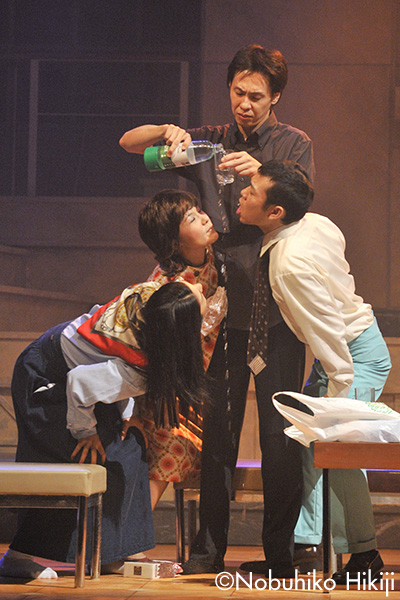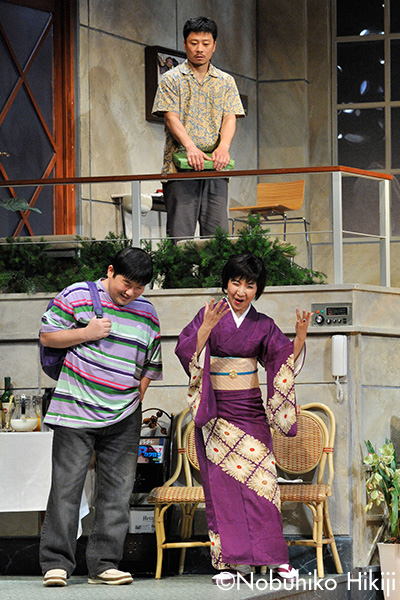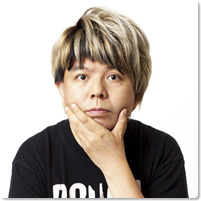Just turned 30, the protagonist is a playwright who fled his life two years earlier to enter the sanatorium, leaving behind his theater company which at the time was doing fairly well. He is sometimes haunted by phantoms of his callous mother and good-natured father and sometimes talks with himself as if in delusion. One day, members of his theater company come with a request for him to write a new play but he refuses, saying that he is tired “tired of normal comedy” and that he has “stepped off the cord of comedy” and can only write things that don’t make sense anymore. But in fact he is tormented by a mix of frustration, tension and resignation with the fact that his humor isn’t popular because it is “ahead it its time.”
Another resident patient at the sanatorium is the formerly popular comedian Sonoda Kenken. He is in the late stages of terminal cancer but he can’t bring himself to tell his wife, Haruna. His condition has deteriorated to the point that he is vomiting and desecrating large volumes of blood, and he finally falls into a coma. His wife Haruna is so distraught that she has worked herself into a state of delusion, believing that Kenken is recovering and will soon leave the sanatorium.
A company owner named Otonami Kyuji comes to the sanatorium to visit his son, Kobone. The selfish Kobone says that if his father wants to come every month he has to deposit 500,000 yen in his bank account each time. But that was only until the bubble burst. After the bubble, the company formerly wealthy-looking Kyuji went bankrupt. Learning that after his mother’s death, all he has been left with is debt, Kobone steals 30,000 yen from the luggage of one of the resident patients who is leaving the sanatorium. But, his act has been witnessed by the sanatorium’s staff, Naruse Minami. In an anxious fit, Kobone murders her to cover up his act.
Another reason for Tsuji’s escape to the Sanatorium was the cooling of his relationship with his girlfriend, Rika, who was the lead actress in his theater company. They had argued repeatedly and finally Tsuji even pushed Mika down a flight of stairs, causing in a permanent scar on her face. After that he was burdened heavily by the guilt from that act.
The phantom of his father appears to Tsuji, followed by six people in weird costumes. They look very much like the actors of his company but they tell him they are not. They say they are the “characters” in his play. The characters tell him that they feel regretful that they weren’t able to perform better for him. Tsuji feels a sort of salvation because of this apology from the characters, who blame themselves even though the fault was his.
Tsuji is talking with Akasaka, the former comedy partner of the only one who really appreciated his “hard to understand comedy,” the late Kenken. Their conversation goes on along a thin line between the laughable and the un-laughable.
*Because double casting is used in almost all parts of this play, it has two different scripts, a white team one and a black team one and some of the details of the gags are different in the two.




